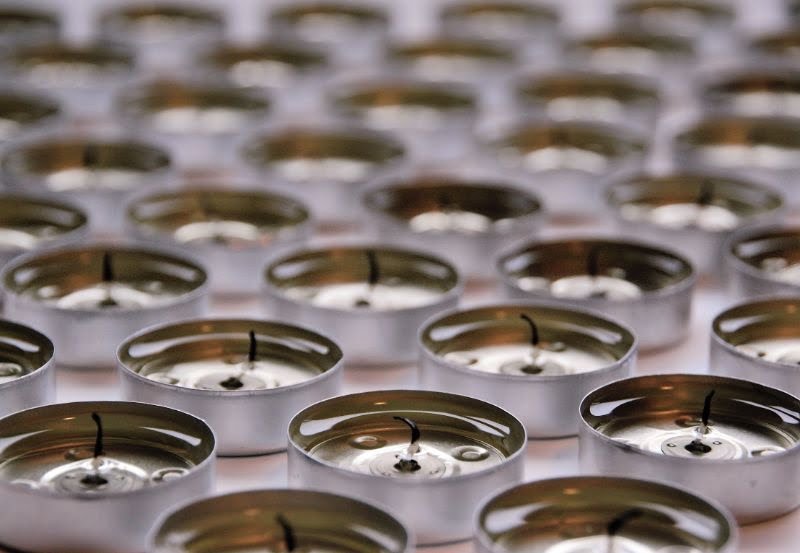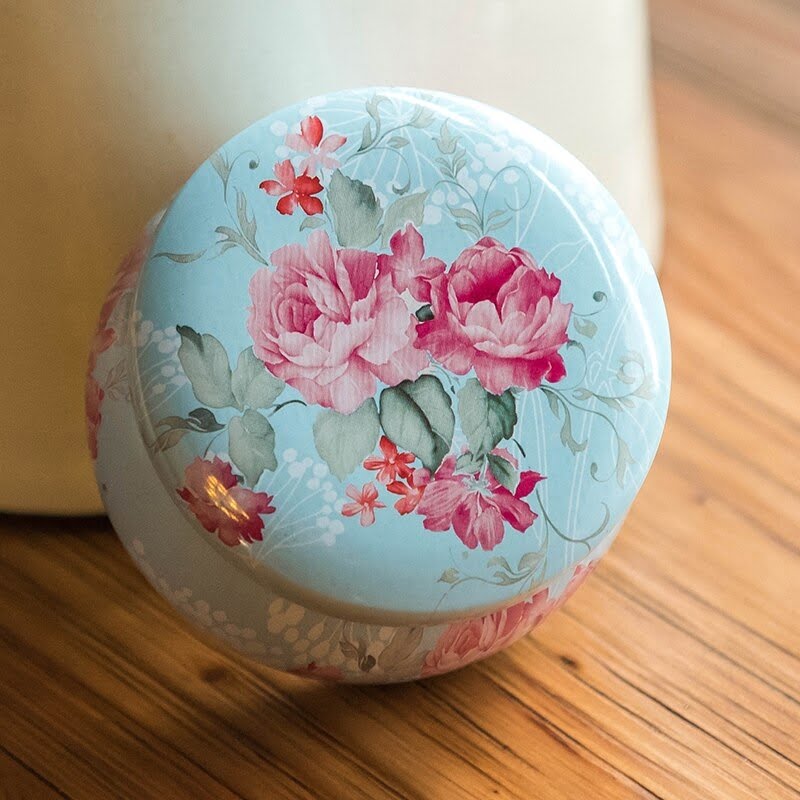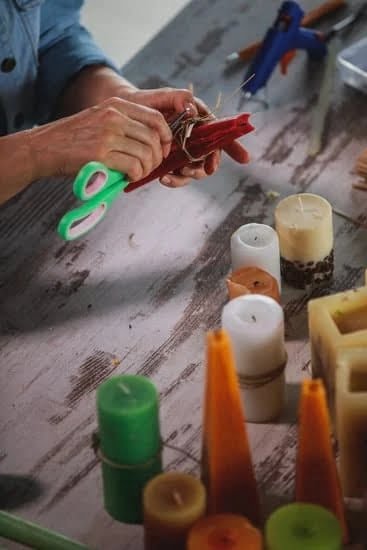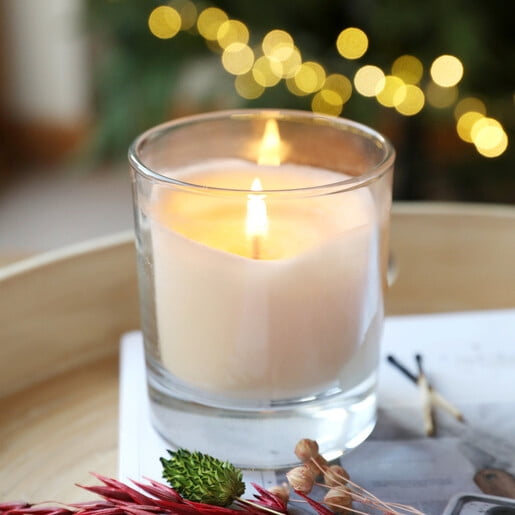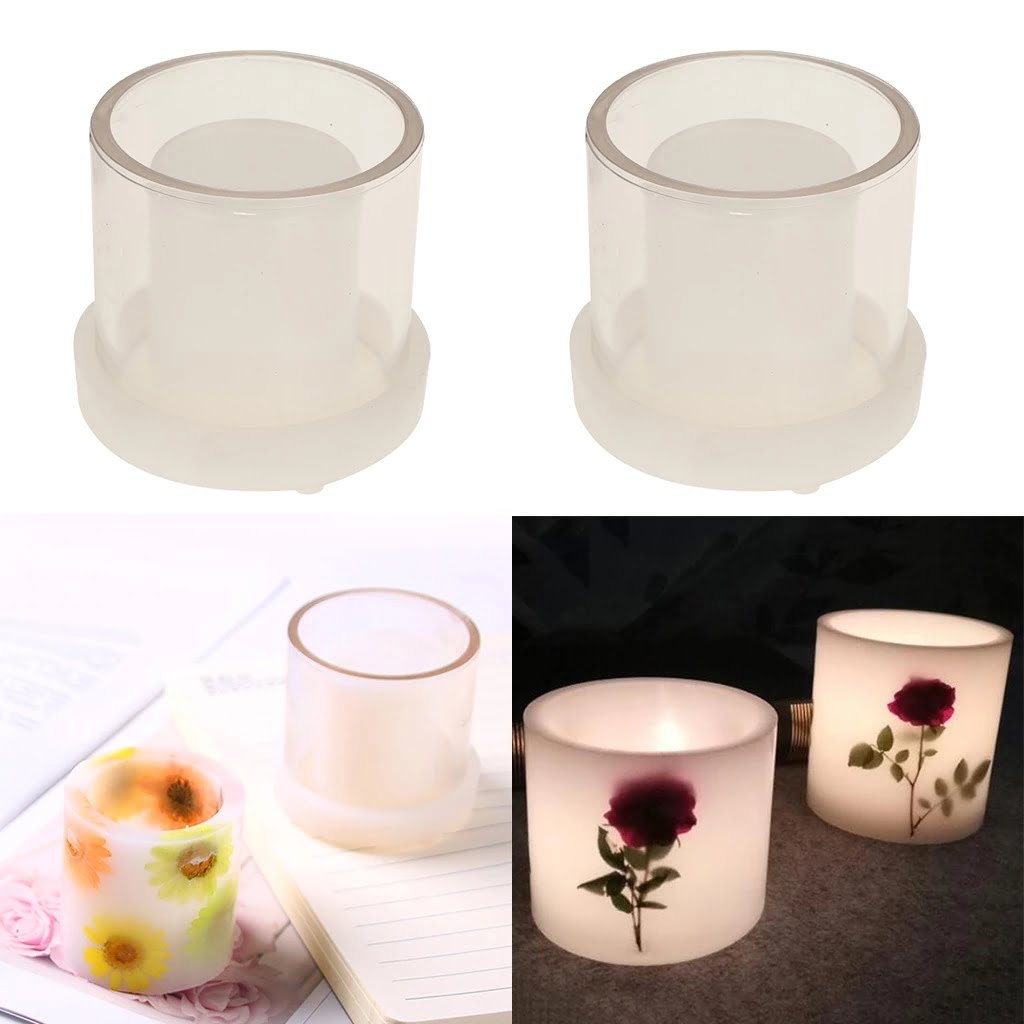The increasing popularity of natural hair products and the desire for do-it-yourself options have sparked curiosity about the potential use of beeswax in hair care. In this article, we will explore the question: Can you use candle making beeswax for natural hair products? Natural hair enthusiasts are always seeking alternative ingredients to nourish and style their hair, and beeswax is known for its beneficial properties.
Beeswax has been used in skincare and beauty products for centuries due to its numerous benefits. Not only does it provide moisturization and protection, but it also adds texture and hold to hairstyles. However, it is essential to understand what beeswax actually is before considering its use in natural hair care.
When discussing beeswax, it is important to emphasize that not all beeswax is created equal. There is a difference between candle making beeswax and cosmetic grade beeswax specially formulated for beauty applications. Understanding these distinctions can help determine whether candle making beeswax is suitable for using in natural hair products or if specific risks and limitations come into play.
As we delve further into this topic, we will examine the composition of beeswax, explore DIY recipes using candle making beeswax, weigh the benefits and drawbacks of incorporating it into homemade hair products, seek professional opinions from experts in the field, and ultimately provide a comprehensive perspective on using candle making beeswax for natural hair care.
Whether you’re a DIY enthusiast or simply curious about alternatives to commercial hair products, this article aims to equip you with knowledge to make informed decisions about incorporating beeswax into your hairstyling routine.
Understanding Beeswax
Beeswax is a natural substance made by honeybees. It is used for building honeycombs and protecting the bees’ hive. In recent years, it has gained attention in the beauty and hair care industry due to its numerous benefits for the skin and hair. Understanding what beeswax is and how it is made can help us appreciate its potential uses in natural hair products.
Beeswax is produced when worker bees consume honey and then excrete wax through special glands on their abdomens. This wax is then used to build the intricate structures of the honeycomb.
The unique properties of beeswax make it an excellent ingredient for skincare and haircare products. It acts as a natural emollient, helping to lock in moisture without clogging pores or weighing down the hair. Beeswax also provides a protective layer on the surface of the hair shaft, reducing frizz and adding shine.
Some components of beeswax, such as fatty acids, esters, and alcohol, contribute to its beneficial properties. These compounds nourish the hair follicles, promoting healthy growth and preventing breakage.
In addition to its moisturizing abilities, beeswax has impressive holding power, making it an ideal ingredient in styling products like pomades and waxes. Its ability to provide structure while maintaining flexibility allows for versatile styling options without damaging the hair.
Candle Making Beeswax vs. Cosmetic Grade Beeswax
When considering using beeswax for natural hair products, it is important to understand the differences between candle making beeswax and cosmetic grade beeswax. While they both originate from bees and share certain properties, there are significant variations in their purity, filtering, and processing methods.
Cosmetic grade beeswax is specifically processed and purified to meet the standards required for use in skincare and haircare products. It undergoes thorough filtration processes to remove impurities like pollen, debris, and bee parts. On the other hand, candle making beeswax tends to be less refined as its primary purpose is for creating candles rather than being used directly on the body or hair.
Using candle making beeswax for hair care purposes carries potential risks. The impurities present in this type of beeswax may not be suitable for direct contact with the scalp or hair strands. It can cause clogged pores or irritate sensitive skin. Additionally, candle making beeswax may not have undergone the necessary testing for allergens commonly associated with cosmetic-grade quality.
To ensure optimal safety and effectiveness when using beeswax for natural hair products, it is recommended to source high-quality cosmetic grade beeswax from reputable suppliers. This ensures that the product has undergone appropriate purification processes and is free from contaminants that could potentially harm your scalp or hair health.
While it may be tempting to use candle making beeswax due to its accessibility and affordability, it is crucial to prioritize the well-being of your hair and scalp by investing in cosmetic grade beeswax. By doing so, you can enjoy all the benefits of this versatile ingredient without compromising on quality or risking any adverse reactions.
Analyzing the Composition
Beeswax, a natural wax produced by bees, is known for its various beneficial properties in skincare and haircare. To understand how beeswax can be used as a natural ingredient in hair products, it is essential to examine its chemical composition. Beeswax is primarily made up of fatty acids, esters, and hydrocarbons that contribute to its unique characteristics.
One of the key components found in beeswax is palmitic acid, which acts as an emollient and helps to moisturize the hair. This fatty acid forms a protective barrier on the strands, preventing moisture loss and keeping the hair hydrated. Additionally, palmitic acid gives beeswax its thick and creamy texture, making it an ideal ingredient for creating nourishing hair masks and conditioners.
Another significant compound present in beeswax is myricyl palmitate, an ester derived from palmitic acid. Myricyl palmitate has conditioning properties and contributes to the smoothness and softness of the hair. It coating the strands with a thin layer that helps to seal in moisture and reduce frizz.
Furthermore, beeswax contains various hydrocarbons such as ceresin, which provide hold and structure to the hair. These hydrocarbons give beeswax its styling versatility, making it suitable for creating pomades and waxes for shaping and defining hairstyles.
Overall, the chemical composition of beeswax plays a crucial role in its ability to nourish and style the hair effectively. By understanding these compounds’ functions, individuals can make informed decisions when incorporating candle making beeswax into their homemade hair products.
Table: Chemical Composition of Beeswax
| Compound | Function |
|---|---|
| Palmitic Acid | Moisturizes and forms a barrier to retain moisture |
| Myricyl Palmitate | Conditions the hair and reduces frizz |
| Ceresin | Provides hold and structure for styling |
Incorporating candle making beeswax into DIY natural hair products can be a cost-effective and sustainable option. However, it is essential to obtain high-quality beeswax to reap its full benefits. Improper sourcing or low-quality beeswax may contain impurities, such as pollen, dirt, or residual chemicals from pesticides.
To ensure the purity and safety of the beeswax used for hair products, it is recommended to opt for cosmetic-grade beeswax instead of candle making beeswax. Cosmetic-grade beeswax undergoes rigorous filtering and processing methods specifically designed for skincare and haircare applications. It is free from contaminants and maintains a higher level of cleanliness compared to candle making beeswax.
Using candle making beeswax for hair products carries certain risks due to its lower purity and potential impurities. The presence of impurities in the wax can lead to adverse reactions on the scalp or hair, especially if individuals have allergies or sensitivities. Additionally, using unfiltered or low-quality candle making beeswax may result in less desirable outcomes in terms of effectiveness and overall satisfaction with the homemade hair products.
Therefore, when considering using candle making beeswax for natural hair products, individuals should prioritize obtaining high-quality, cosmetic-grade options. Ensuring proper sourcing and quality control will help maximize the potential benefits while minimizing any potential drawbacks associated with using candle making beeswax in DIY hairstyling formulations.
DIY Beeswax Hair Products
Step-by-Step Instructions
Making your own beeswax hair products at home can be a fun and rewarding experience. By using candle making beeswax, you have the opportunity to create personalized natural hair care products that are free from potentially harmful chemicals and additives. Below, we provide step-by-step instructions on how to make three different beeswax-based hair products: a hair mask, pomade, and conditioner.
To make a nourishing beeswax hair mask, you will need the following ingredients:
- 2 tablespoons of candle making beeswax.
- 4 tablespoons of coconut oil.
- 1 tablespoon of honey.
- 5 drops of essential oil (optional).
Instructions:
- Place the candle making beeswax and coconut oil in a heat-proof bowl or container.
- Create a double boiler by filling a pot with water and placing it on the stove over medium heat.
- Place the bowl or container with the beeswax and coconut oil on top of the pot.
- Stir the mixture occasionally until fully melted and well combined.
- Remove from heat and let it cool for a few minutes.
- Add honey and essential oil (if desired) to the mixture and stir until thoroughly blended.
- Apply the warm mixture to your damp hair, focusing on the ends.
- Leave it on for 30 minutes to an hour before rinsing with lukewarm water.
Detailed Recipes
For those looking for a lightweight styling product, a homemade beeswax pomade is an excellent choice. Here’s what you’ll need:
- 1/4 cup of candle making beeswax.
- 2 tablespoons of shea butter.
- 2 tablespoons of jojoba oil.
- 10 drops of your preferred essential oil (optional).
Instructions:
- In a heat-proof bowl or container, combine the candle making beeswax, shea butter, and jojoba oil.
- Create a double boiler by placing the bowl on top of a pot filled with water over medium heat.
- Stir gently until all ingredients are melted and well mixed.
- Remove from heat and let it cool for a few minutes.
- If desired, add 10 drops of essential oil to give your pomade a pleasant scent.
- Pour the mixture into an airtight container or tin while it is still warm and pliable.
- Allow the pomade to cool completely and solidify before use.
- Use your fingertips to apply a small amount of the beeswax pomade to dry or damp hair for styling purposes.
For those in need of extra hydration, a beeswax-based conditioner can help restore moisture and manageability to your hair. Here’s what you’ll need:
- 1/2 cup of candle making beeswax.
- 1/2 cup of shea butter.
- 1/4 cup of coconut oil.
- 1 tablespoon of argan oil.
- 5 drops of your preferred essential oil (optional).
Instructions:
- In a heat-proof bowl or container, combine the candle making beeswax, shea butter, coconut oil, and argan oil.
- Create a double boiler by placing the bowl on top of a pot filled with water over medium heat.
- Stir gently until all ingredients are melted and well mixed.
- Remove from heat and let it cool for a few minutes.
- If desired, add 5 drops of essential oil to enhance the fragrance of your conditioner.
- Transfer the mixture into an empty shampoo bottle or any other container that allows easy dispensing.
- Shake well before each use to ensure proper blending of ingredients.
- Apply the conditioner generously to damp hair after shampooing, focusing on the lengths and ends. Leave it on for a few minutes before rinsing thoroughly.
Tips for Customization
It’s important to note that these recipes can be adjusted to suit different hair types and concerns. If you have dry or damaged hair, consider adding a tablespoon of avocado oil to the hair mask recipe for added nourishment. For those with oily hair or scalp, experiment with substituting the coconut oil in the pomade or conditioner recipe with grapeseed oil, which has more lightweight conditioning properties.
Furthermore, feel free to incorporate essential oils according to your personal preferences and aromatherapy needs. Lavender essential oil can provide a calming effect, while peppermint essential oil can invigorate the senses. Remember to conduct a patch test before using any new product on your hair or skin to ensure you do not have an allergic reaction.
By customizing these recipes based on your unique needs, you can optimize their effectiveness and achieve healthy-looking hair without relying on commercial products filled with potentially harmful ingredients.
Benefits and Drawbacks
Potential Benefits of Beeswax in Homemade Natural Hair Products
Using candle making beeswax in homemade natural hair products can offer a range of benefits for your hair. One major advantage is improved hair texture. Beeswax has the ability to add a natural shine and smoothness to the hair strands, making them appear healthier and more vibrant. Additionally, it helps to tame frizz and reduce flyaways, resulting in more manageable and polished-looking hairstyles.
Another benefit of using beeswax in DIY hair products is its moisture retention properties. Beeswax has a thick consistency that can create a protective barrier on the hair shaft, trapping moisture within the strands. This helps to prevent dryness and breakage, especially for those with naturally dry or damaged hair. Regular use of beeswax-based conditioners or masks may contribute to softer, more hydrated locks.
Furthermore, beeswax offers styling versatility. It provides a light hold that allows you to shape and mold your hair without leaving it stiff or crunchy like some commercial styling products. Whether you want to achieve defined curls, sleek updos, or textured hairstyles, beeswax can be an excellent natural alternative for achieving your desired look.
Challenges and Limitations of Using Candle Making Beeswax
While there are numerous benefits of incorporating candle making beeswax into homemade natural hair products, there are also some challenges and limitations that need to be considered.
One potential drawback is the difficulty in finding high-quality candle making beeswax suitable for hair care purposes. Candle making beeswax is not produced with the same degree of purity as cosmetic-grade beeswax. It may contain impurities or residues from the candle-making process that could potentially irritate the scalp or lead to product build-up on the hair.
Furthermore, there is a possibility of allergenic reactions when using candle making beeswax on the scalp or hair. Some individuals may have sensitivities or allergies to certain compounds found in beeswax, such as pollen or bee propolis. It is important to perform a patch test before applying any new homemade hair products containing candle making beeswax to ensure compatibility and avoid adverse reactions.
Despite these challenges, with proper sourcing of high-quality candle making beeswax and careful consideration of individual allergies or sensitivities, incorporating this natural ingredient into your DIY hair care routine can be a rewarding experience.
Professional Opinions and Expert Advice
As with any DIY beauty trend, it is essential to gather insights from haircare professionals and experts regarding the potential use of candle making beeswax in natural hair products. Their perspective on the effectiveness, safety, and long-term impact on hair health can provide valuable guidance for those considering using beeswax in their hair care routine.
One expert opinion comes from Dr. Sarah Johnson, a renowned trichologist with years of experience in studying scalp and hair health. According to Dr. Johnson, “Using candle making beeswax as a natural hair product ingredient can be a double-edged sword. On one hand, beeswax offers moisturizing properties that can provide benefits like enhanced shine, reduced frizz, and improved manageability. However, the purity and quality of the wax used are crucial factors to consider”.
Another professional who weighs in on this topic is celebrity hairstylist Mary Davis. She points out that while there may be risks associated with using candle making beeswax for hair products, such as potential allergic reactions or clogged pores on the scalp, proper sourcing and quality control can address these concerns.
“It’s important to choose high-quality candle making beeswax that has been properly filtered and processed,” advises Davis. “Look for suppliers who guarantee purity and ensure that no harmful additives or residues are present”.
In addition to professional opinions, it is advisable to consult with a hairstylist or trichologist before incorporating beeswax into your hair care routine. They can assess your specific needs and guide you towards the right volumizing hacks best suited for your hair type or condition. Furthermore, they can help address any potential allergies or sensitivities you may have.
By seeking advice from professionals in the field, consumers can make informed decisions about whether or not to use candle making beeswax in their natural hair care routine. Whether it’s through online consultations or face-to-face appointments, hearing from experts can provide the necessary reassurance and peace of mind. Remember, what works for one person may not work for another, so personalized advice is key in achieving optimal hair care results.
By considering professional opinions and expert advice on the use of candle making beeswax in natural hair products, individuals can make informed choices about their hair care routine. Staying cautious, sourcing high-quality beeswax, and consulting with professionals are vital steps to ensure that DIY experiments result in the desired outcomes without causing harm or adverse effects. With proper guidance and attention to detail, candle making beeswax has the potential to become a valuable addition to natural hair care routines.
Conclusion
In conclusion, the use of candle making beeswax for natural hair products can be a viable option for those looking to create their own DIY hair care solutions. However, it is important to exercise caution and understand the differences between candle making beeswax and specialized cosmetic-grade beeswax. While candle making beeswax may offer some benefits for hair health and styling, it lacks the purity and filtering methods of cosmetic-grade beeswax that ensure optimal results.
The chemical composition of beeswax contains valuable compounds that contribute to hair nourishment and styling possibilities. By understanding these components, individuals can create customized hair masks, pomades, and conditioners using candle making beeswax. This allows for improved hair texture, moisture retention, and styling versatility.
It is important to note that sourcing high-quality candle making beeswax may present some challenges. Therefore, it is crucial to find reputable suppliers who prioritize purity and quality control in their products. Additionally, individuals should be mindful of possible allergenic reactions that can occur with the use of any new product on the skin or scalp.
To gain further insights into the use of candle making beeswax in natural hair products, it is advisable to seek professional opinions and expert advice. Haircare professionals can provide valuable guidance on the effectiveness, safety, and long-term impact of using this ingredient in homemade hair care solutions.
Frequently Asked Questions
Can you use beeswax on natural hair?
Beeswax can indeed be used on natural hair. It is a versatile ingredient that can provide various benefits to natural hair, particularly in terms of moisture and styling. Beeswax helps seal in moisture, preventing dryness and enhancing the overall health and appearance of the hair.
It also assists in defining curls and providing hold for different hairstyles. However, it’s important to note that beeswax should be used in moderation to avoid buildup or weighing down the hair.
What can I mix with beeswax for my hair?
When mixing beeswax for your hair, there are several ingredients you can consider depending on your specific needs and preferences. One popular option is combining beeswax with carrier oils such as coconut oil or jojoba oil. This blend helps create a more manageable texture while also moisturizing the hair.
Additionally, adding shea butter or cocoa butter to the mix can enhance its softening properties and give extra nourishment to dry or damaged hair. Alternatively, essential oils like lavender or rosemary can be incorporated for their soothing or invigorating effects.
What does beeswax do for curly hair?
Beeswax offers numerous advantages for curly hair due to its unique properties. One of its main benefits is its ability to provide definition and hold to curls, making them more manageable and reducing frizz. This makes beeswax an excellent choice for individuals seeking a natural way to style their curly locks without resorting to harsh chemicals found in many commercial products.
Furthermore, beeswax helps seal moisture into each curl strand, preventing dryness and maintaining optimal hydration levels within the hair shafts. By retaining moisture, beeswax also contributes to improved elasticity and reduced breakage, promoting healthier-looking curls overall.

Welcome to my candle making blog! In this blog, I will be sharing my tips and tricks for making candles. I will also be sharing some of my favorite recipes.

